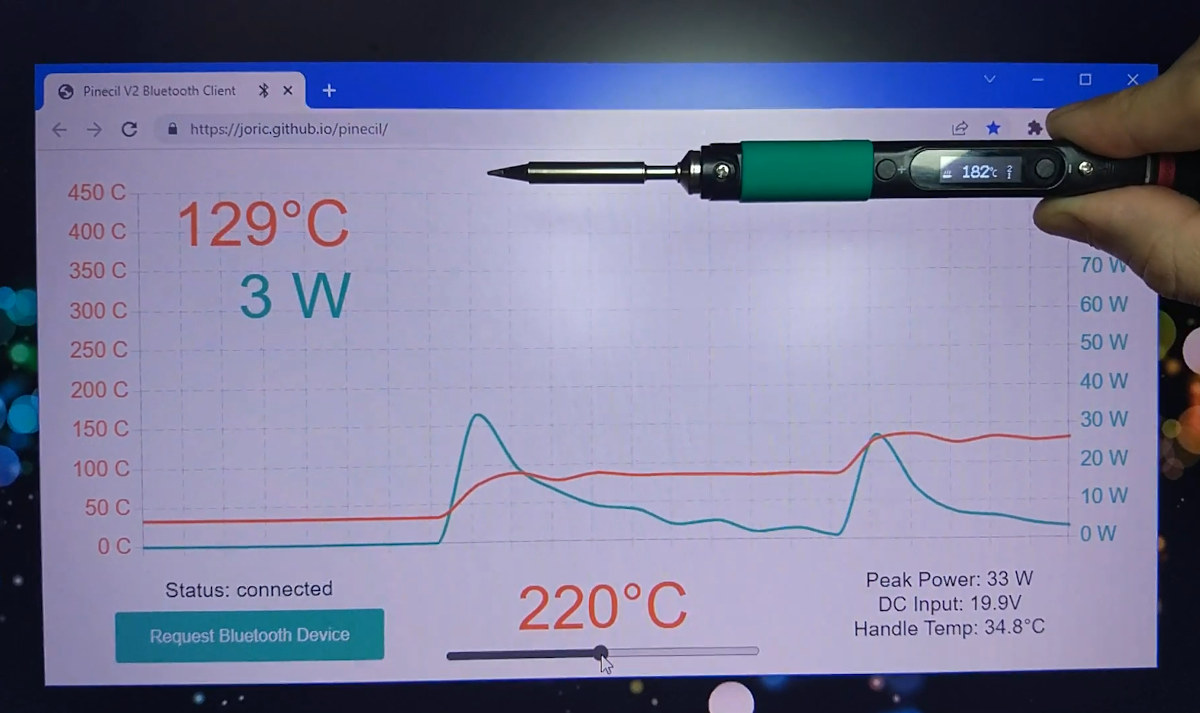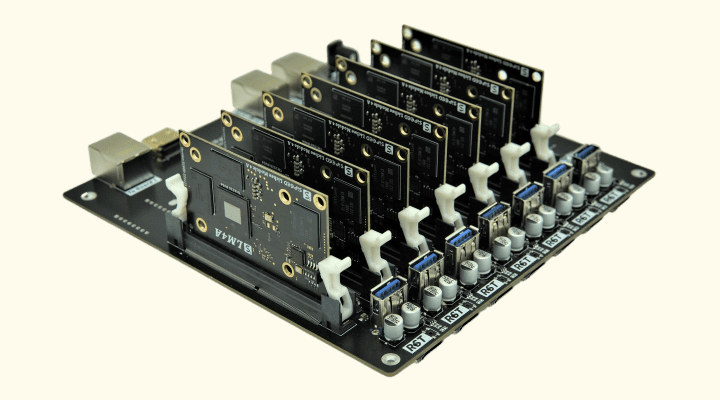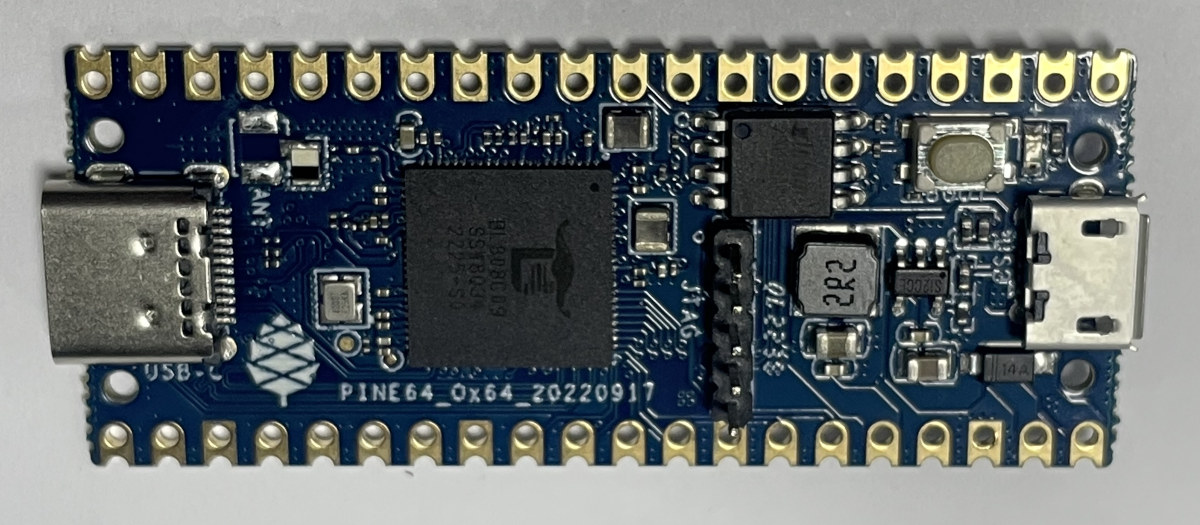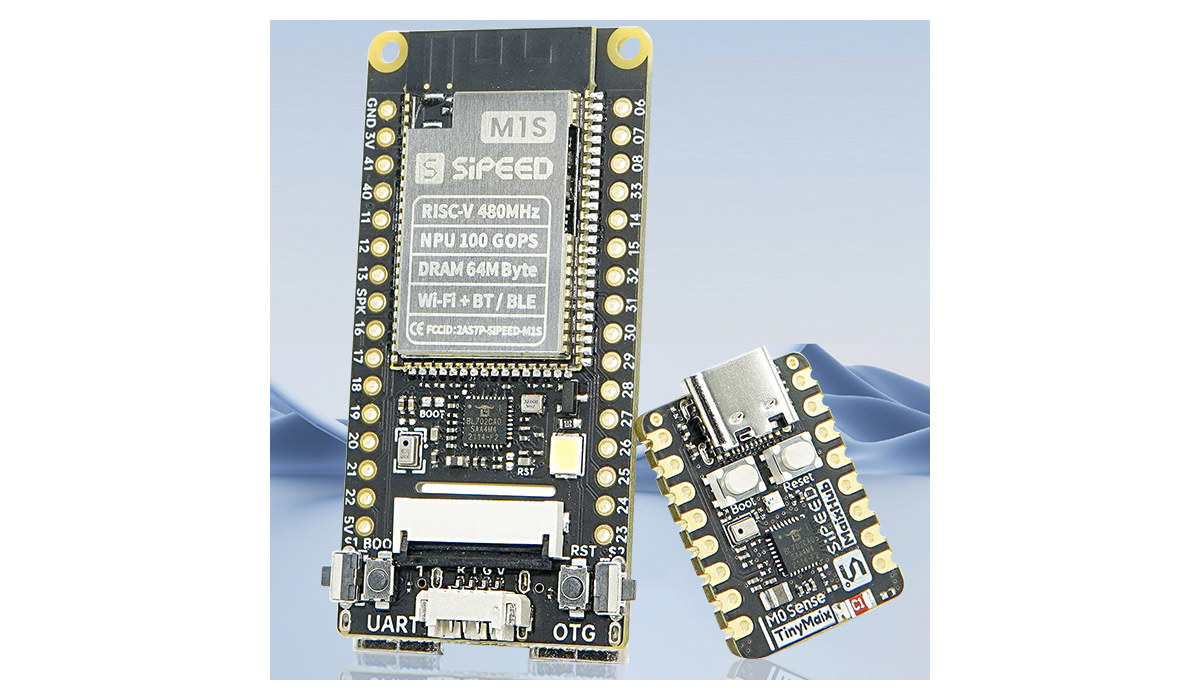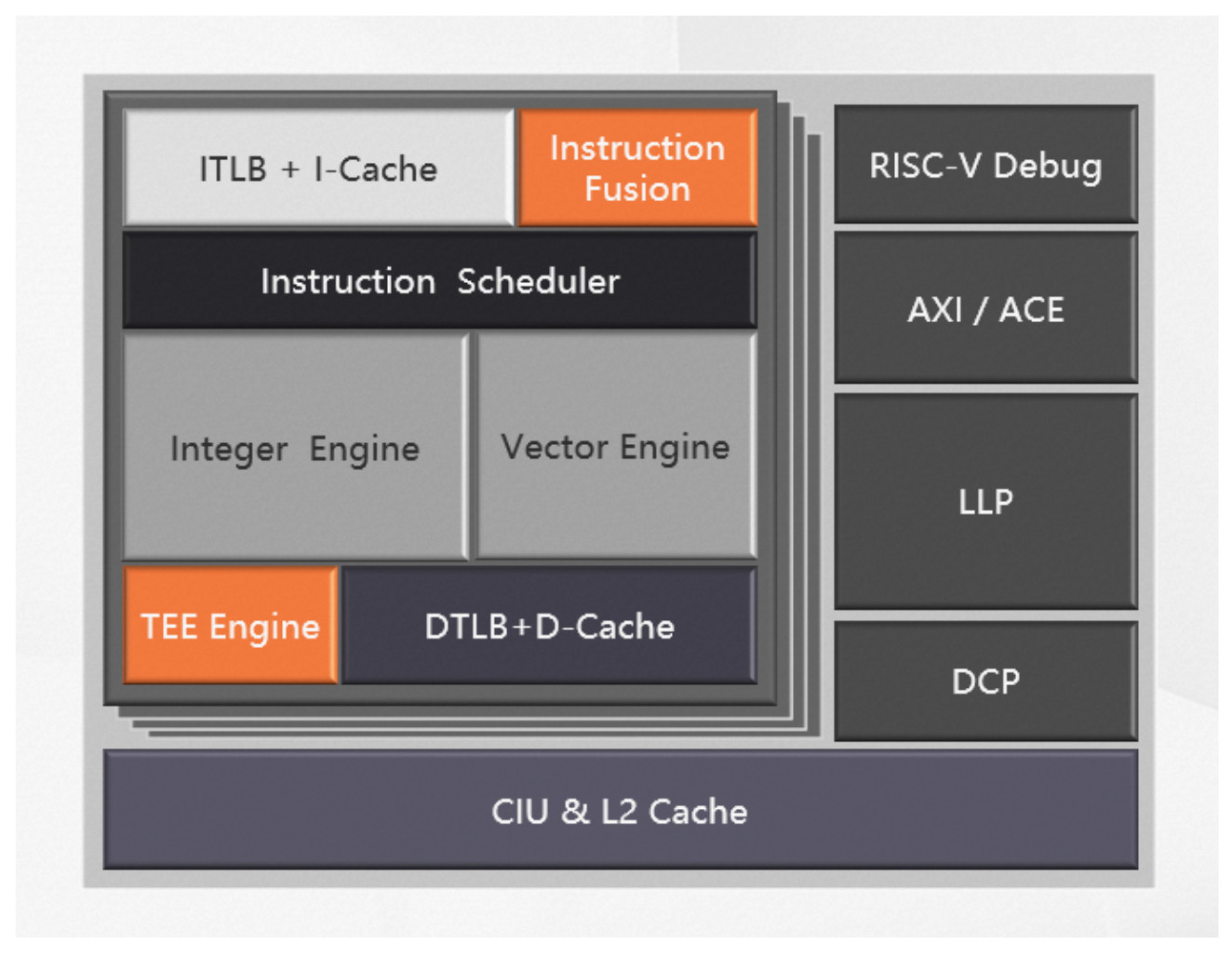It’s the last day of the year and the time to look at some of the highlights of 2022, some traffic statistics from CNX Software website, and speculate on what 2023 may bring us. The semiconductors shortage continued in 2022, but things are looking brighter in 2023 with the full reopening of the world mixed with forecasts of difficult economic times that should keep the demand/supply equation in check. On the Arm processor front the biggest news of the year, at least in this corner of the Internet, was the launch of the Rockchip RK3588 octa-core Cortex-A76/A55 processor together with interesting single board computers that we’ll discuss below. Announced last year, the Amlogic A311D2 octa-core Cortex-A73/A53 was finally made available in a few SBC’s, and we finally got some news about the Amlogic S928X Cortex-A76/A55 SoC showcased in 8K TV boxes, but we have yet to see it in action. […]
Pinecil V2 Bluetooth LE soldering iron gets a web interface
It’s now possible to make use of the Pinecil V2 soldering iron‘s Bluetooth LE connectivity through a web-based interface used to monitor and/or set the temperature and power of the RISC-V soldering iron. When the Pinecil V2 soldering iron was launched with a Bouffalo Lab BL706 RISC-V Bluetooth microcontroller last summer, we were told there were main potential cases to make use of the Bluetooth LE features: OTA firmware upgrade and remote telemetry and control. The latter is now being taken care of by Joric who has written a web application to visualize telemetry data and even control the temperature of the soldering iron. To be able to use the Bluetooth features, you’ll first need to install the latest Pinecil V2 firmware with blisp flashing utility before going to https://joric.github.io/pinecil to pair your soldering iron as explained in the wiki. Note the implementation relies on the Web Bluetooth API which […]
Sipeed LM4A – T-Head TH1520 RISC-V module to power Raspberry Pi 4 competitor and cluster board
Sipeed LM4A is a quad-core RISC-V system-on-module based on the T-Head TH1520 SoC found in the ROMA laptop and destinated to be found in a Raspberry Pi SBC competitor as well as a cluster board. The LM4A, which stands for Lichee Module 4 Model A, comes with 4GB to 16GB RAM, and up to 64GB flash, and connects to the carrier board through a 260-pin SO-DIMM connector. The TH1520 is one of the rare RISC-V SoCs with a 3D GPU, and the SBC based on LM4A has been shown to outperform the Raspberry Pi 4 in benchmarks as we’ll see below. Sipeed LM4A specifications: SoC – Alibaba T-Head TH1520 quad-core RISC-V Xuantie C910 (RV64GCV) processor @ 2.5 GHz, Xuantie C906 audio DSP @ 800 MHz, low power Xuantie E902 core, 50 GFLOPS Imagination 3D GPU, and 4 TOPS NPU System Memory – 4GB, 8GB, or 16GB RAM Storage – Optional […]
Linux 6.1 LTS release – Main changes, Arm, RISC-V and MIPS architectures
Linus Torvalds announced the release of Linux 6.1, likely to be an LTS kernel, last Sunday: So here we are, a week late, but last week was nice and slow, and I’m much happier about the state of 6.1 than I was a couple of weeks ago when things didn’t seem to be slowing down. Of course, that means that now we have the merge window from hell, just before the holidays, with me having some pre-holiday travel coming up too. So while delaying things for a week was the right thing to do, it does make the timing for the 6.2 merge window awkward. That said, I’m happy to report that people seem to have taken that to heart, and I already have two dozen pull requests pending for tomorrow in my inbox. And hopefully I’ll get another batch overnight, so that I can try to really get as […]
Armbian 22.11 released with 64-bit RISC-V UEFI, ultra minimal images support
Armbian 22.11 has just been released with three new SBCs, support for 64-bit RISC-V UEFI, a new ultra-minimal image optimized for software development, and various improvements. Armbian was born as a framework to build better OS images, usually Debian or Ubuntu, for Arm-based single board computers from Orange Pi, Hardkernel (ODROID), FriendlyElec, Banana Pi, and others, but now with the release of Armbian 22.11, support for the RISC-V architecture has started since the system can now generate 64-bit RISC-V UEFI images. Some other highlights of Armbian 22.11 include: Added support for Banana Pi BPI-M5 (Amlogic S905X3), ODROID-M1 (Rockchip RK3568), and Rock Pi 4C Plus (Rockchip RK3399-T) Enabled community images with a weekly release cycle Added ultra minimal images optimized for software deployment Improved support for the Rock Pi S (Rockchip RK3308) Kernel upgrade is frozen by default to improve stability I could not find details about the new “Minimal” images, […]
$6 Pine64 Ox64 SBC features BL808 64-bit/32-bit RISC-V multi-protocol WiSoC with 64MB RAM
Pine64 Ox64 is a single board computer powered by Bouffalo Lab BL808 dual-core 64-bit/32-bit RISC-V processor with up to 64MB embedded RAM, multiple radios for WiFi 4, Bluetooth 5.0, and 802.15.4 (Zigbee), as well as an AI accelerator. The board also features up to 16MB XSPI NOR flash, a MicroSD card socket, a USB 2.0 OTG port with support for a 2-lane MIPI CSI camera module, and two 20-pin GPIO headers for expansion. It measures just 51 x 21mm, or in other words, is about the size of a Raspberry Pi Pico W. Pine64 Ox64 specifications: SoC – Bouffalo Lab BL808 with: CPU Alibaba T-head C906 64-bit RISC-V core @ 480MHz Alibaba T-head E907 32-bit RISC-V core @ 320MHz Alibaba T-head E902 32-bit RISC-V @ 150MHz Memory – 728KB SRAM, 64MB embedded DRAM AI accelerator – NPU BLAI-100 (Bouffalo Lab AI engine) for video/audio detection/recognition Wireless 2.4 GHz 802.11 b/g/n […]
Sipeed M1s & M0sense – Low-cost BL808 & BL702 based AI modules (Crowdfunding)
Sipeed has launched the M1s and M0Sense AI modules. Designed for AIoT application, the Sipeed M1s is based on the Bouffalo Lab BL808 32-bit/64-bit RISC-V wireless SoC with WiFi, Bluetooth, and an 802.15.4 radio for Zigbee support, as well as the BLAI-100 (Bouffalo Lab AI engine) NPU for video/audio detection and/or recognition. The Sipeed M0Sense targets TinyML applications with the Bouffa Lab BL702 32-bit microcontroller also offering WiFi, BLE, and Zigbee connectivity. Sipeed M1s AIoT module The Sipeed M1S is an update to the Kendryte K210-powered Sipeed M1 introduced several years ago. Sipeed M1s module specifications: SoC – Bouffalo Lab BL808 with CPU Alibaba T-head C906 64-bit RISC-V (RV64GCV+) core @ 480MHz Alibaba T-head E907 32-bit RISC-V (RV32GCP+) core @ 320MHz 32-bit RISC-V (RV32EMC) core @ 160 MHz Memory – 768KB SRAM and 64MB embedded PSRAM AI accelerator – NPU BLAI-100 (Bouffalo Lab AI engine) for video/audio detection/recognition delivering up […]
T-Head XuanTie C908 RISC-V core targets AIoT applications
We’ve seen two announcements of high-end RISC-V cores this week with the SiFive P670 and Andes AX65 processors each with a 4-way out-of-order pipeline, but Alibaba’s T-Head Semiconductor Xuantie C908 is a little different with a dual-issued, 9-stage in-order pipeline and support for the RISC-V Vector extension acceleration targeting mid-range AIoT applications. The C908 64-bit RISC-V core adopts the RV64GCB[V] instruction and complies with the RVA22 profile for better compatibility with Android and other “rich” operating systems. The company says its performance is between the C906 and C910 cores introduced in 2020 and 2019 respectively. XuanTie C908 highlights: RV32GCB[V] 32-bit and RV64GCB[V] 64-bit RISC-V architectures with Bit manipulation and (optional) Vector operations extensions Support for RV32 COMPAT mode which allows for 64-bit RISC-V CPUs to run 32-bit binary code, and was merged into Linux 5.19. XuanTie extensions, including Instruction, Memory Attributes Extension (XMAE). RVA22 profile compatibility Cluster of 1 to […]



